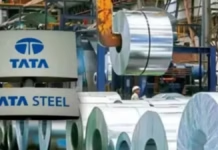In a significant step towards decarbonizing the cement industry, SLB Capturi, in collaboration with Heidelberg Materials and Aker Solutions, has successfully completed the world’s first industrial-scale carbon capture plant at a cement facility in Brevik, Norway. This groundbreaking facility, part of Europe’s pioneering Longship CCS project, marks a new era in sustainable cement production.
The Brevik Carbon Capture and Storage (CCS) plant is designed to capture an impressive 400,000 metric tons of CO₂ annually, contributing to the cement industry’s ambitious net-zero goals. The facility integrates advanced carbon capture technology with compression, heat recovery, and storage systems, ensuring minimal disruption to cement quality and production processes. Testing and commissioning are now underway, with full-scale operations expected to begin in 2025. Cement production is one of the largest industrial contributors to global CO₂ emissions, given the energy-intensive nature of its processes. According to industry experts, carbon capture is not just an option but a necessity for achieving the sector’s decarbonization targets. The Brevik plant stands as a testament to what is possible when cutting-edge technology meets collaborative determination.
“This project exemplifies our commitment to innovation, collaboration, and the pursuit of solutions to address climate change. We are immensely proud of the hard work of our teams and partners who have made this possible,” said Giv Brantenberg, General Manager for Northern Europe at Heidelberg Materials. The success of this ambitious project is attributed to the seamless partnership between SLB Capturi, Heidelberg Materials, and Aker Solutions. Egil Fagerland, CEO of SLB Capturi, highlighted the significance of collaboration, saying, “The Brevik CCS plant sets a precedent for future carbon capture initiatives. The learnings from this project will undoubtedly inspire other industries to follow.”
The Brevik CCS facility is a flagship initiative within Europe’s Longship CCS project, which is the first integrated value chain in the region for capturing, transporting, and storing CO₂ emissions. This innovative infrastructure aims to make industrial decarbonization scalable, replicable, and economically viable. By capturing emissions from cement manufacturing—a notoriously difficult-to-decarbonize sector—the Brevik CCS plant serves as a model for global industries striving to meet climate goals. As the plant enters the commissioning phase, it offers a blueprint for other industries to adopt carbon capture technology on a similar scale. With a capacity to offset significant emissions, the Brevik CCS project represents not just a technological milestone but also a crucial step towards a more sustainable future. By aligning industrial growth with environmental responsibility, this project underscores the importance of innovative solutions in addressing the urgent challenges of climate change.







